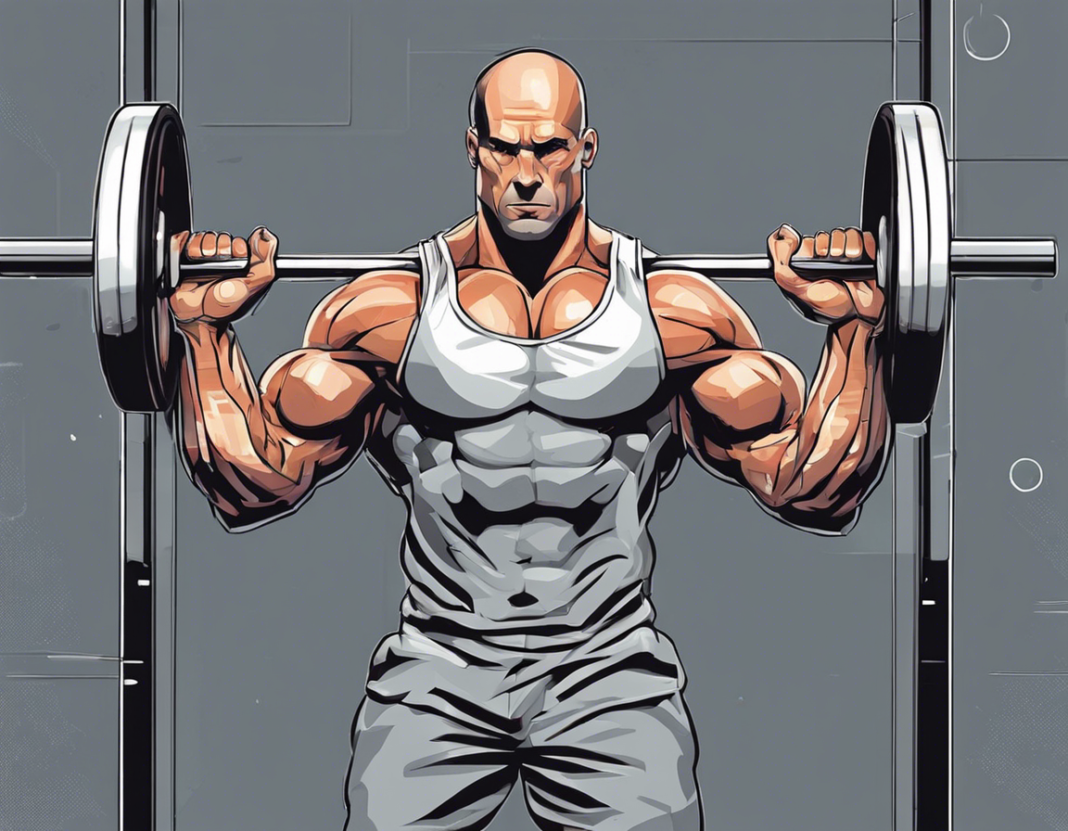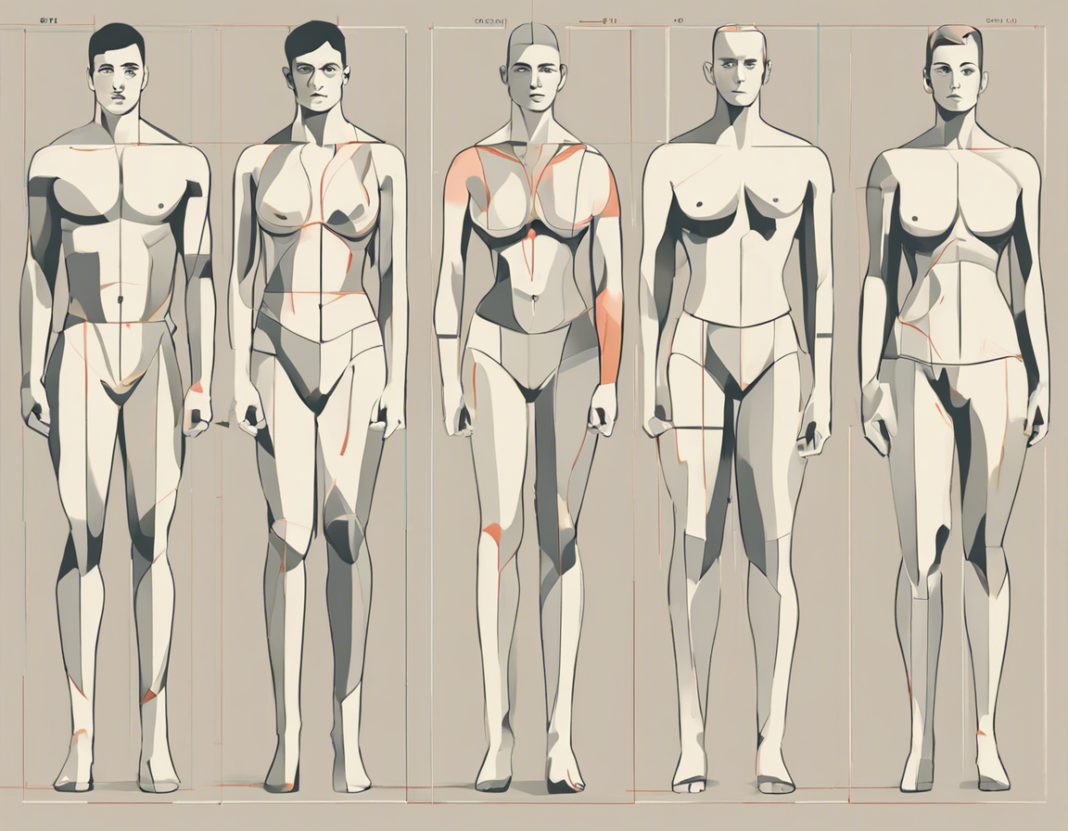The Bottom Line:
- The article discusses common mistakes in biceps curls that can reduce bicep stimulation and increase stress on the wrist, elbows, and shoulders.
- Mistake #1: Excessive shoulder flexion during curls can shift focus away from the biceps and onto the front delts, impacting muscle engagement.
- Mistake #2: Using curling variations with improper alignment can limit biceps output and increase strain on joints, affecting long-term progress.
- Mistake #3: Selecting biceps exercises based solely on sensation may not always correlate with optimal muscle-building effectiveness.
- Emphasizing basic mid-range curls like barbell or dumbbell curls can be sufficient for biceps growth, with optional shortened or lengthened variations as supplements.
Excessive Shoulder Flexion: How it impacts biceps engagement
Excessive shoulder flexion during biceps curls can significantly impact biceps engagement. When your upper arms drift too far forward during the curl, it turns the exercise into a hybrid movement involving both biceps and front delts. This shift in positioning decreases the workload on the biceps and brings more of the front delts into play, affecting the overall effectiveness of the exercise. To ensure optimal biceps activation, it’s crucial to maintain proper form by keeping the upper arms stationary throughout the movement.
Proper Alignment for Effective Biceps Activation
Performing curling variations with improper alignment can hinder biceps engagement and lead to strain on the wrists, shoulders, and elbows. When the path of resistance doesn’t match the natural curling path of the biceps, it limits the muscle output and increases the risk of injury over time. Stick to curling variations where the wrist, elbow, and shoulder are kept in line to ensure that the resistance directly opposes the biceps fibers, maximizing the effectiveness of the exercise.
Selecting Biceps Exercises Based on Effectiveness
Choosing biceps exercises solely based on the sensation they produce can be misleading. While some variations may create a strong feeling of muscle engagement, it doesn’t necessarily translate to increased muscle-building effectiveness. The most effective biceps exercises often focus on the mid-range position, such as basic barbell, dumbbell, or cable curls. Prioritize movements that emphasize this mid-range position to ensure consistent biceps growth over time, complemented by shortened and lengthened position curls as supplementary exercises for a well-rounded biceps workout routine.
Improper Alignment in Curling Variations: The importance of natural resistance paths
Improper Alignment in Curling Variations: The Importance of Natural Resistance Paths
Performing curling variations with improper alignment can hinder biceps engagement and lead to strain on the wrists, shoulders, and elbows. When the path of resistance doesn’t match the natural curling path of the biceps, it limits muscle output and increases the risk of injury over time.
Optimizing Resistance Path for Maximum Effectiveness
To maximize the effectiveness of biceps curls, it is crucial to select variations where the resistance directly opposes the biceps fibers. Stick to movements that keep the wrist, elbow, and shoulder in line throughout the exercise. This ensures that the biceps are properly engaged and reduces strain on supporting joints.
Choosing curling variations based on proper alignment ensures that the biceps are loaded optimally, leading to consistent muscle growth over time. While novel variations may seem effective due to increased sensation, prioritizing proper alignment will provide better results in the long run.
Selecting Exercises Based on Feel: Understanding the sensation vs. effectiveness
Understanding Sensation vs. Effectiveness
When it comes to selecting exercises for your biceps, it’s important to differentiate between the sensation a particular exercise may give you and its actual effectiveness in muscle building. While some exercises may create a strong feeling of muscle engagement, it doesn’t always mean that they are the most effective for overall muscle growth. Prioritize exercises that focus on the mid-range position, such as basic barbell, dumbbell, or cable curls. These movements emphasize optimal biceps activation and consistent growth over time.
Proper Form for Optimal Results
Maintaining proper form during biceps exercises is crucial for maximizing muscle engagement and avoiding strain on supporting joints. Improper alignment in curling variations can hinder biceps activation and increase the risk of injury over time. Ensure that the path of resistance matches the natural curling path of the biceps by keeping the wrist, elbow, and shoulder in line throughout the movement. This alignment not only optimizes biceps loading but also reduces strain on the wrists, shoulders, and elbows, leading to better results in the long run.
Enhancing Biceps Activation
Selecting curling variations based on their alignment and effectiveness is key to enhancing biceps activation and promoting consistent muscle growth. Avoid exercises that force the resistance onto a fixed vertical line, as this can limit overall biceps output and increase strain on the joints. Stick to variations where the resistance directly opposes the biceps fibers, ensuring that the muscles are properly engaged throughout the exercise. By prioritizing alignment and effectiveness in your biceps workouts, you can achieve optimal results and minimize the risk of injury over time.
Optimizing Mid-Range Position: The underrated power of basic curls
Optimizing Mid-Range Position: The Underrated Power of Basic Curls
When it comes to biceps training, the mid-range position often gets overlooked in favor of flashy variations that promise a strong sensation. However, basic barbell, dumbbell, or cable curls that emphasize this mid-range position can be incredibly effective for consistent biceps growth over time.
Importance of Mid-Range Position for Biceps Activation
The mid-range position of a curl is where the biceps experience optimal activation and tension. Movements that start with the arms directly at your sides, such as standard barbell curls, provide a strong foundation for biceps development. Emphasizing this mid-range position ensures that the biceps are consistently engaged throughout the exercise.
Consistency in Biceps Training for Long-Term Growth
While it may be tempting to chase after novel curling variations that produce a heightened sensation, true muscle-building effectiveness lies in consistency and proper alignment. Prioritizing mid-range curls alongside shortened and lengthened position exercises can create a well-rounded biceps workout routine that promotes steady and sustainable muscle growth over time.
Balancing Exercise Variety: Integrating different types of curl variations effectively
Balancing Exercise Variety: Integrating different types of curl variations effectively
When it comes to optimizing your biceps workout routine, integrating a variety of curl variations is key. However, it’s essential to balance these variations effectively to ensure maximum biceps engagement and overall muscle growth.
Importance of Targeting Different Biceps Heads
One important aspect to consider when integrating different curl variations is targeting the different heads of the biceps. By incorporating exercises that emphasize the short head and long head of the biceps, you can ensure comprehensive muscle development and avoid potential imbalances.
For example, including hammer curls or reverse curls can target the brachialis and brachioradialis muscles, which can complement the development of the biceps brachii. By strategically selecting curl variations that target these different muscle groups, you can achieve a well-rounded biceps workout.
Periodization and Progression
To effectively integrate different types of curl variations, it’s important to implement periodization strategies. Periodizing your biceps workouts by rotating through various curl variations over time can prevent plateaus and keep your muscles challenged for continued growth.
Additionally, focusing on progressive overload with each curl variation is crucial. Gradually increasing the weight, reps, or sets as you advance in your training will help stimulate muscle growth and prevent stagnation in your biceps development.
Balanced Approach for Optimal Results
Ultimately, achieving balanced exercise variety in your biceps workout routine is key to maximizing muscle growth and strength gains. By integrating different curl variations that target various aspects of the biceps musculature, implementing periodization techniques, and maintaining a focus on progressive overload, you can optimize your biceps training for long-term success.





